Elm Zigzag Sawfly
Elm zigzag sawfly (EZS), Aproceros leucopoda Takeuchi, is an invasive forest pest native to Asia. It was reported and confirmed for the first time in North America in Sainte-Martine, Québec in 2020. It has since spread to Ontario and has been reported in several US states. EZS attacks most species of elm through its native and introduced ranges. In 2025, elm zigzag sawfly was discovered in Winnipeg, Manitoba.
EZS damages elms during the larval stage when it feeds on the leaves. It can cause severe defoliation that can stress affected trees. While it is not known to spread the fungus that causes Dutch elm disease, stressed American elm trees may be more vulnerable to infection and to attack from other pests and diseases.
Life Cycle
EZS reproduces parthenogenetically, meaning the female reproduces asexually and can produce up to six generations per year. No males are known to exist. Adults, which resemble wasps, generally occur from mid-April to mid-September. The larval or caterpillar stage, is usually found from late May to mid-October. One generation can develop in 24 to 29 days. This insect overwinters in the pupal stage.
Adult females are present during the summer months and live up to six days. Females begin laying up to 49 eggs immediately after emergence, laid singly into the serrated leaf margin. After four to eight days, larvae hatch and begin eating leaves, causing a characteristic zigzag pattern. The caterpillars grow and develop through six life stages and can completely consume leaves.
Mature caterpillars spin a net-like cocoon and attach to a structure, such as the underside of leaves, branches, or shoots. Pupation occurs in two to three days, with adults emerging four to seven days later. In winter, cocoons are dense and found in the litter and duff layers of the soil on the ground.
Physical Description
Adult elm zigzag sawflies are dark brown or black, wasp-like insects that are about five mm long, with yellow to white legs.
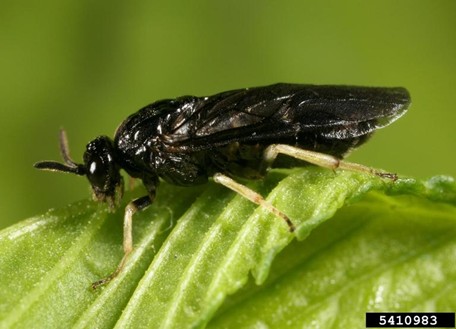
Aproceros leucopoda on an elm leaf. Photo by Gyorgy Csoka, Hungary Forest Research Institute, Bugwood.org.
Caterpillars are initially grayish white and approximately two cm long. They are green with black spots near their breathing openings and one triangular black spot on their upper backs. They grow up to 10 – 11 mm long.
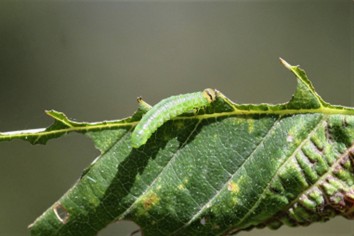
Larva feeding on elm leaf – photo by Olivier Morin
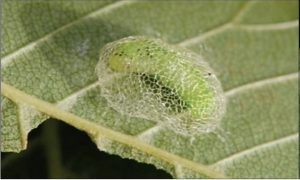
Net-like summer cocoon. Photo by Danail Doychev, Univeristy of Forestry Bulgaria.
Damage
Elm zigzag sawfly larvae feed on elm leaves and can severely defoliate them. This can affect the growth of the tree and contribute to weakened overall tree health. It also has the potential to further exacerbate the decline of elm trees in conjunction with Dutch elm disease.
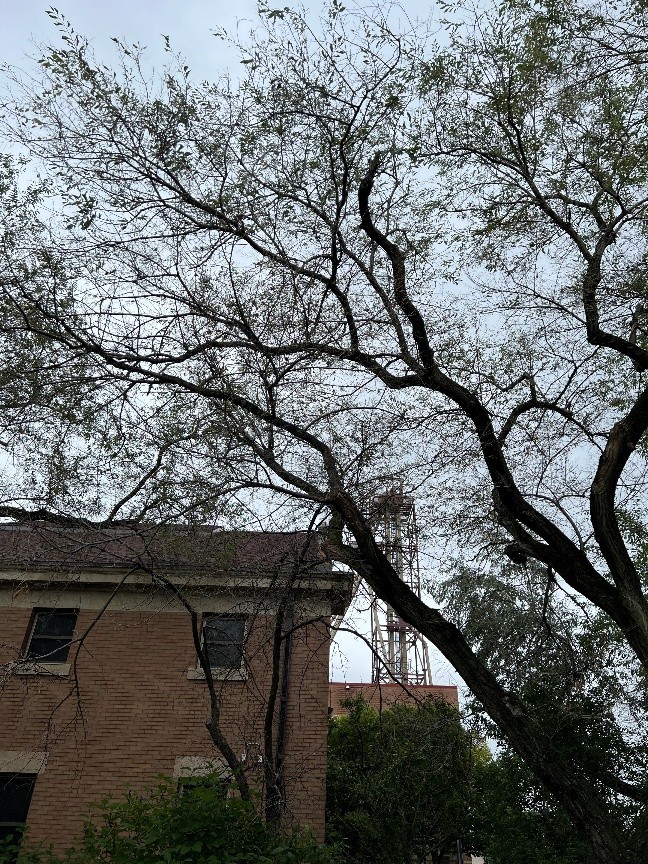
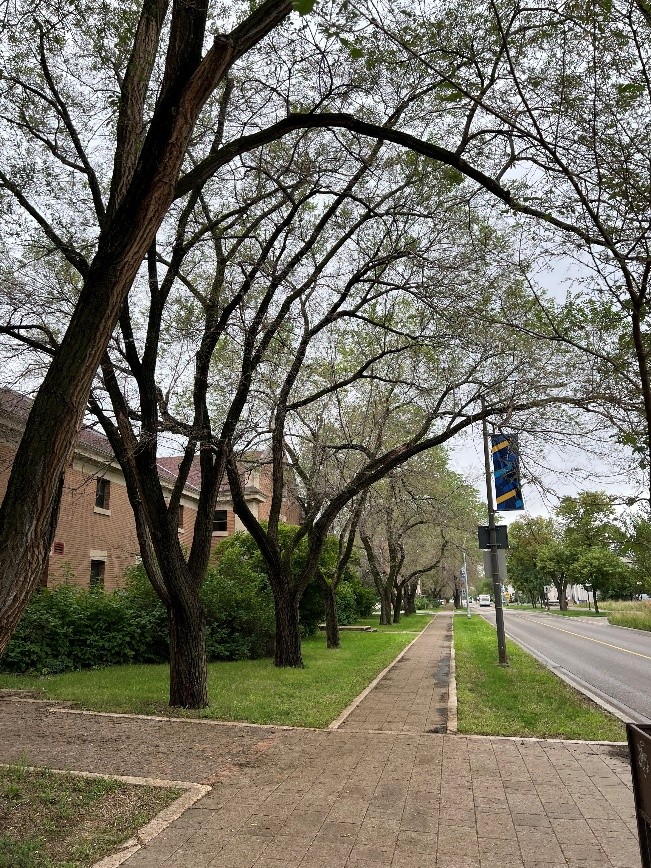
Feeding caterpillars create a signature zigzag feeding pattern through the elm leaves when feeding, which is visible from May to October.
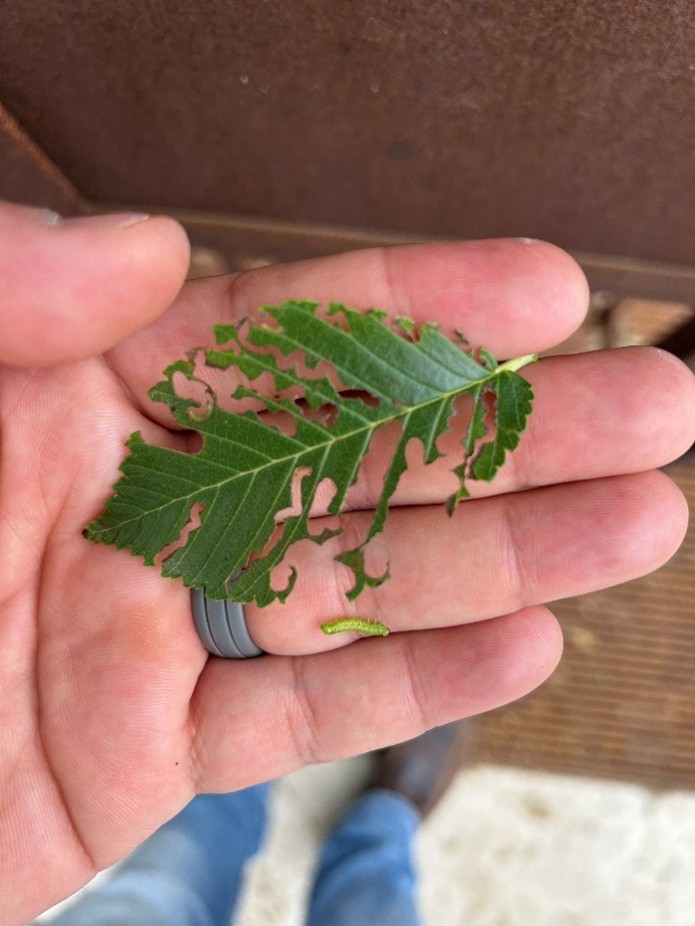
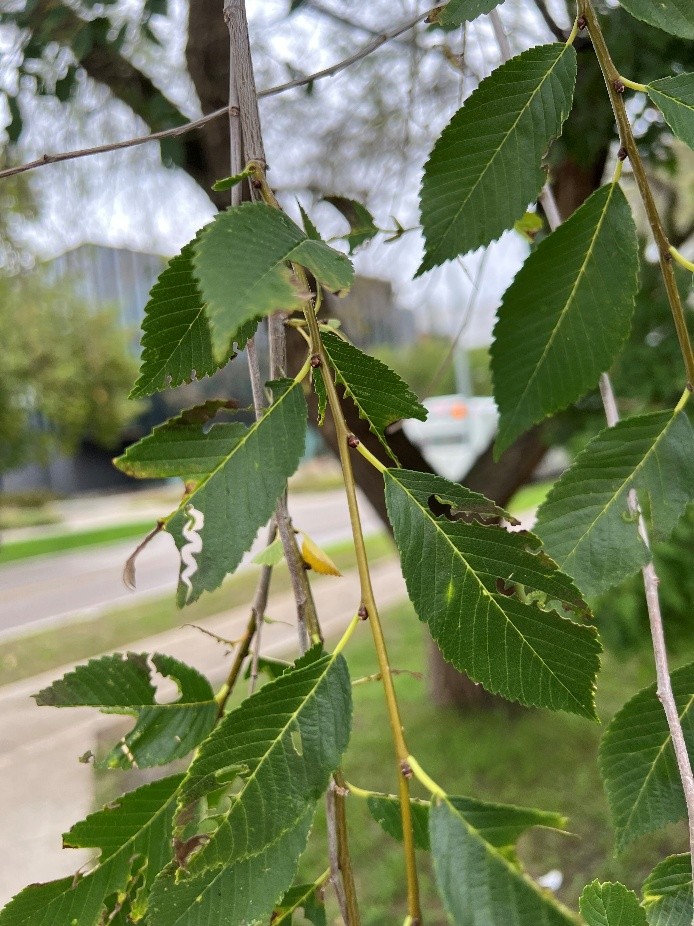
Control
There are currently no pesticides recommended in Canada against elm zigzag sawfly. Generalist predators, such as birds and true bugs, have been observed in Canada feeding on this insect.
Links
For more information, please contact:
Forestry and Peatlands Branch Tree Line at 204-945-7866, or email treeline@gov.mb.ca


